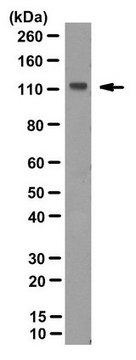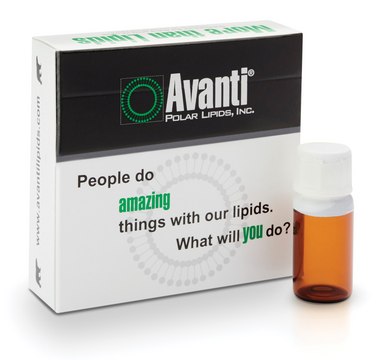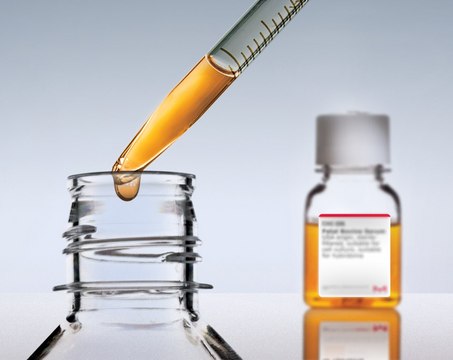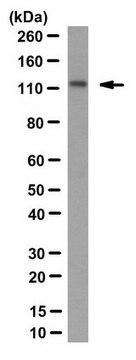ABS1508
Anti-SREBP-1
from rabbit, purified by affinity chromatography
Sign Into View Organizational & Contract Pricing
All Photos(2)
Synonym(s):
Sterol regulatory element-binding protein 1, Class D basic helix-loop-helix protein 1, bHLHd1, Sterol regulatory element-binding transcription factor 1
UNSPSC Code:
12352203
eCl@ss:
32160702
NACRES:
NA.41
Recommended Products
biological source
rabbit
Quality Level
antibody form
affinity isolated antibody
antibody product type
primary antibodies
clone
polyclonal
purified by
affinity chromatography
species reactivity
human
packaging
antibody small pack of 25 μg
technique(s)
immunohistochemistry: suitable (paraffin)
western blot: suitable
isotype
IgG
UniProt accession no.
shipped in
ambient
target post-translational modification
unmodified
Gene Information
human ... SREBF1(6720)
General description
Sterol regulatory element-binding protein 1 (UniProt: P36956; also known as SREBP-1, Class D basic helix-loop-helix protein 1, bHLHd1, Sterol regulatory element-binding transcription factor 1) is encoded by the SREBF1 (also known as BHLHD1, SREBP1) gene (Gene ID: 6720) in human. SREBP-1 is a multi-pass membrane protein that acts as at transcriptional activator required for lipid homeostasis. Six isoforms of SREBP-1 have been described that are produced by alternative splicing. SREBP-1 is expressed in a wide variety of tissues and is most abundant in liver and adrenal gland. In fetal lung and liver it is expressed in high levels. SREBP-1A predominates in hepatoma cell lines while isoform SREBP-1C is predominantly found in liver, adrenal gland, and ovary. Both isoforms IA and IC is found in kidney, brain, white fat, and muscle. SREBP-1 regulates transcription of the LDL receptor gene as well as the fatty acid and to a lesser degree the cholesterol synthesis pathway. It binds to the sterol regulatory element 1 (SRE-1) (5′-ATCACCCCAC-3′) and has dual sequence specificity binding to both an E-box motif (5′-ATCACGTGA-3′) and to SRE-1 (5′-ATCACCCCAC-3′). SREBP-1 has two cytoplasmic domains (aa 1-487 and 567-1147; two helical domains (aa 488-508 and 548-568), and a luminal domain (aa 509-547). In the absence of sterols, it moves from the endoplasmic reticulum to the Golgi. At low cholesterol the SCAP/SREBP complex is recruited into COPII vesicles for export from the ER. In the Golgi complex SREBPs are cleaved sequentially by site-1 and site-2 protease. The first cleavage by site-1 protease occurs within the luminal loop, the second cleavage by site-2 protease occurs within the first transmembrane domain and releases the transcription factor from the Golgi membrane.
Specificity
This rabbit polyclonal antibody detects Sterol regulatory element-binding protein 1 in human.
Immunogen
KLH-conjugated linenar peptide corresponding to 14 amino acids from the N-terminal half of human Sterol regulatory element-binding protein 1. The Immunogen sequence is conserved in SREBP-1A, B, and C and in isoform 4.
Application
Anti-SREBP-1, Cat. No. ABS1508, is a rabbit polyclonal antibdody that detects Sterol regulatory element-binding protein 1 and has been tested for use in Immunohistochemistry (Paraffin) and Western Blotting.
Immunohistochemistry Analysis: A 1:250-1,000 dilution from a representative lot detected SREBP-1 in human adrenal gland and human kidney tissues.
Research Category
Signaling
Signaling
Quality
Evaluated by Western Blotting in DU145 cell lysate.
Western Blotting Analysis: 1 µg/mL of this antibody detected SREBP-1 in 10 µg of DU145 cell lysate.
Western Blotting Analysis: 1 µg/mL of this antibody detected SREBP-1 in 10 µg of DU145 cell lysate.
Target description
~120 kDa observed; 121.67 kDa calculated. Uncharacterized bands may be observed in some lysate(s).
Physical form
Affinity Purified
Purified rabbit polyclonal antibody in buffer containing 0.1 M Tris-Glycine (pH 7.4), 150 mM NaCl with 0.05% sodium azide.
Storage and Stability
Stable for 1 year at 2-8°C from date of receipt.
Other Notes
Concentration: Please refer to lot specific datasheet.
Disclaimer
Unless otherwise stated in our catalog or other company documentation accompanying the product(s), our products are intended for research use only and are not to be used for any other purpose, which includes but is not limited to, unauthorized commercial uses, in vitro diagnostic uses, ex vivo or in vivo therapeutic uses or any type of consumption or application to humans or animals.
WGK
WGK 1
Flash Point(F)
does not flash
Flash Point(C)
does not flash
Certificates of Analysis (COA)
Search for Certificates of Analysis (COA) by entering the products Lot/Batch Number. Lot and Batch Numbers can be found on a product’s label following the words ‘Lot’ or ‘Batch’.
Already Own This Product?
Find documentation for the products that you have recently purchased in the Document Library.
Fei Liu et al.
Bioengineered, 12(1), 7119-7130 (2021-09-22)
Our previous studies have elucidated a possible connection between long intergenic non-protein coding RNA 2570 (LINC02570) and nasopharyngeal carcinoma (NPC). However, the precise mechanism by which LINC02570 promotes NPC remains unknown. We used quantitative polymerase chain reaction (qPCR) to detect
Our team of scientists has experience in all areas of research including Life Science, Material Science, Chemical Synthesis, Chromatography, Analytical and many others.
Contact Technical Service








